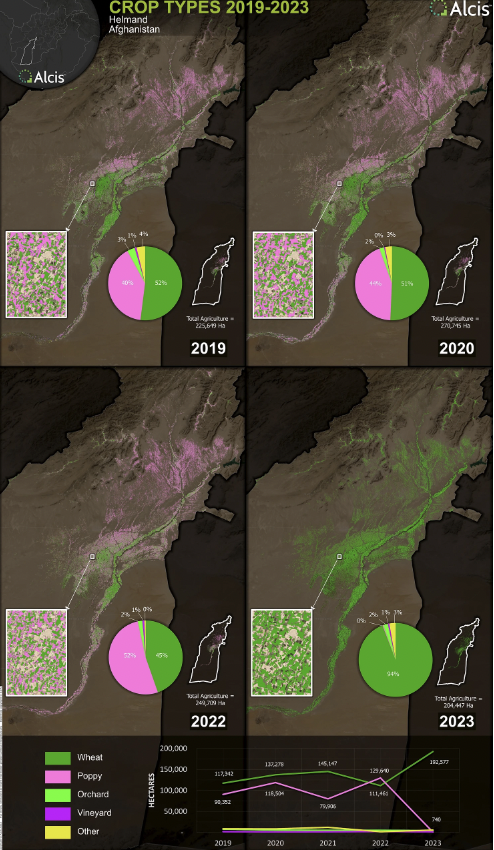A US army humvee passes an opium poppy field in 2006 in Helmand, southern Afghanistan after soldiers involved in poppy eradication were injured in a bomb attack. Photo: John Moore/Getty Images

The "Faces of Fentanyl" wall, which displays photos of some of the 70,000 Americans who die each year from a fentanyl overdose, at the Drug Enforcement Administration (DEA) headquarters in Arlington, Virginia in 2022. Photo: Agnes Bun/AFP via Getty Images
Taliban security personnel destroy a poppy plantation in Kandahar province in April 2023. Photo: Sanaullah Seiam/AFP via Getty Images
A MAN SITS BEHIND BAGS OF OPIUM IN FRONT OF A STORE IN ZHERAY DISTRICT OF KANDAHAR PROVINCE, SOUTHERN AFGHANISTAN, ON APRIL 24, 2022. PHOTO: ELISE BLANCHARD
CHILDREN PLAY WITH A BAG OF OPIUM NEXT TO THE FIELD WHERE THEIR FATHERS ARE HARVESTING POPPY IN A FIELD OF KAJAKI DISTRICT, IN AFGHANISTAN’S SOUTHERN PROVINCE OF HELMAND IN APRIL 2022. PHOTO: ELISE BLANCHARD
